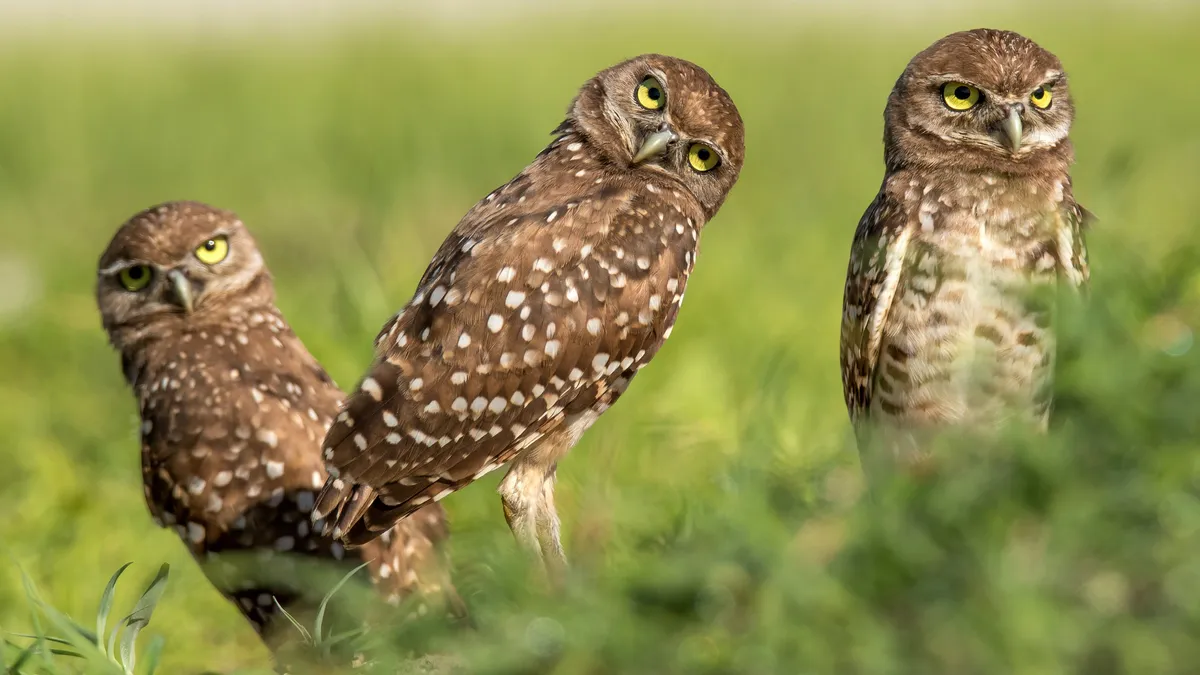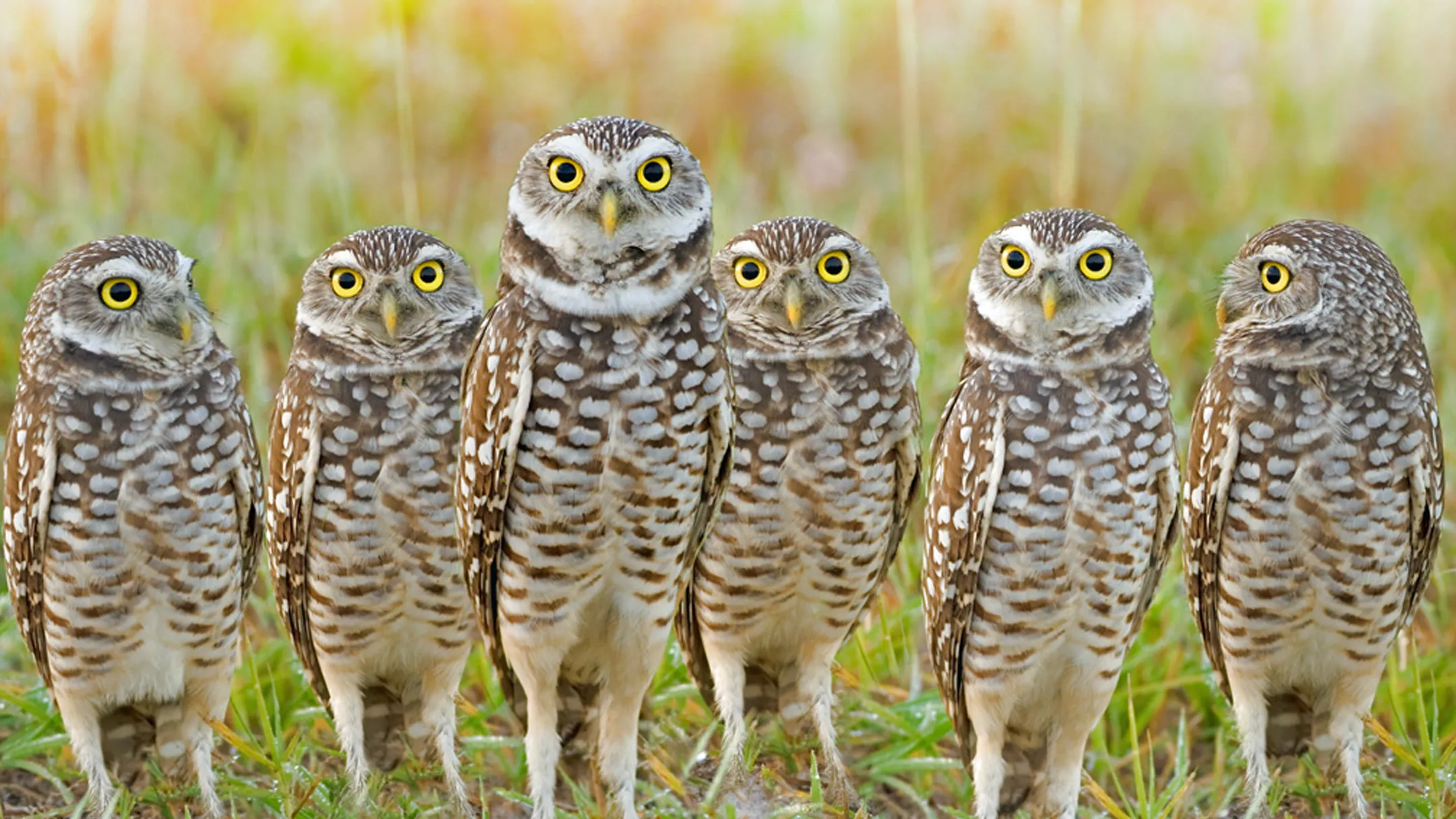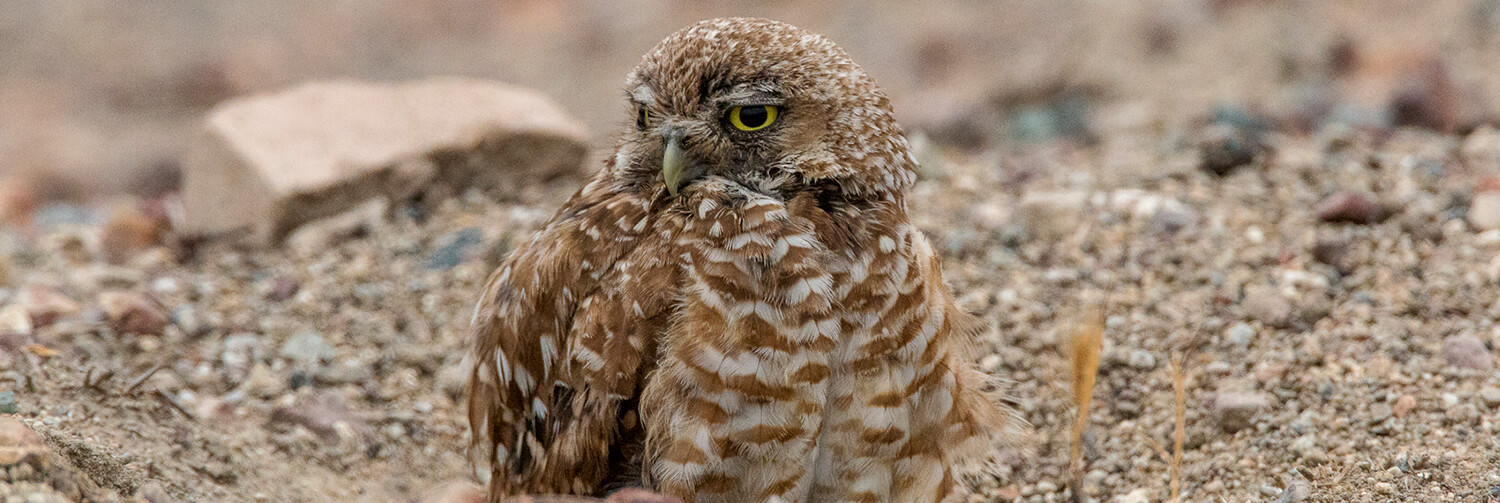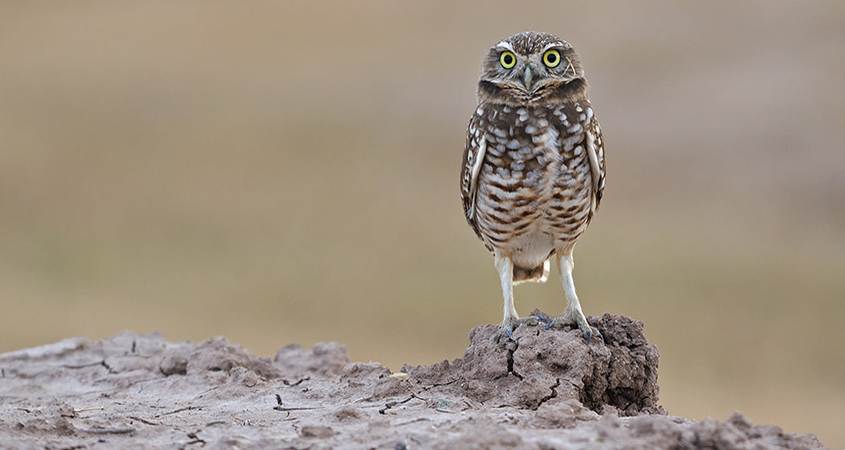STATUS
Critically Endangered


The Burrowing Owl is a New World species that can be found in southwestern Canada, across the western United States and into Florida, throughout Central America, on some Caribbean islands, and in most of South America. Despite their extensive range through Central and South America - areas with naturally dense tropical forests - Burrowing Owls are not a forest species. Like the Aplomado Falcon, they prefer drier, more open areas that can include prairies, grasslands, and savannas. But Burrowing Owls don't stop there! They can also be found living in deserts, farmlands, and even golf courses and other urban areas, such as city parks. In Socorro, New Mexico, there have been reports of the owls living in a grassy patch along an interstate on-ramp!
As their name suggests, Burrowing Owls roost and nest in holes or burrows usually dug by small mammals, such as prairie dogs, badgers, and ground squirrels.
Like many other raptors, Burrowing Owls that live in the northern part of their range are migratory, moving to warmer climates in search of prey when the cold north winter sets in.

STATUS
Critically Endangered

SCIENTIFIC NAME
Athene cunicularia

POPULATION
20,000 left

LENGTH
Stands from 19 to 20 cm tall

WEIGHT
Weighs between 125 and 185 g

HABITAT
GRASSLANDS
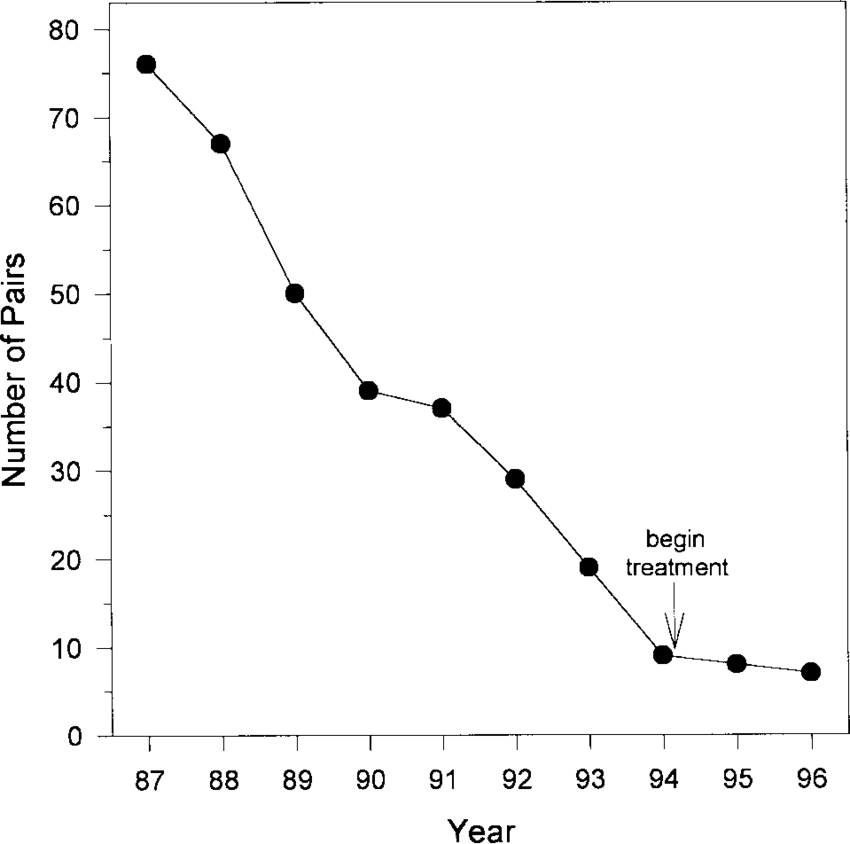
Burrowing owls feed on rodents, large insects (such as crickets, beetles and grasshoppers), and small reptiles and amphibians. to maintain our ecosystem stable
Burrowing owls are protected under the U.S. Migratory Bird Treaty Act. Their primary threats include habitat loss and predation
Burrowing owls are the only small owl species to perch on the ground. Rather than fly away, they often run or flatten themselves against the ground when disturbed..
Burrowing owls depend on a habitat of native grasses to survive. As this habitat is lost to agricultural and urban development, their populations decline.
Up to half of their population loss can be accounted for by badger predation, but their other predators include coyotes and raptors.
